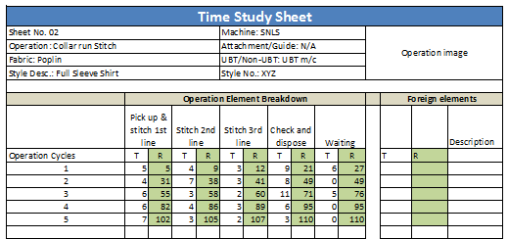how to Do a Time Study
What do you mean by a time study?
A time study is a method used to determine the amount of time it takes to complete a specific task or activity. It involves observing and recording the various steps involved in a process to analyze how time is being spent. Time studies are commonly used in industrial settings to improve efficiency and productivity.
How to conduct a time study?

Image Source: googleusercontent.com
There are several steps involved in conducting a time study:
1. Define the task: Clearly identify the task or activity that you want to study.
2. Break down the task: Divide the task into smaller steps or elements to make it easier to analyze.
3. Select the method: Choose the method of data collection, such as direct observation or self-reporting.
4. Collect data: Record the time taken to complete each step of the task.
5. Analyze the data: Calculate the average time for each step and identify any inefficiencies.
6. Make improvements: Use the findings from the time study to make changes and improve the process.
What is known about time studies?
Time studies have been used for decades in various industries to analyze and improve processes. They provide valuable insights into how time is being spent and where improvements can be made. Time studies are used to optimize workflow, reduce waste, and increase productivity.
Solution for conducting a time study
One of the key solutions for conducting a time study is to ensure that the data collected is accurate and reliable. This may involve training observers, using standardized procedures, and minimizing interruptions during data collection. It is also important to involve employees in the process and communicate the purpose of the time study to gain their cooperation.
Information about time studies
Time studies can be conducted using various tools and techniques, such as time tracking software, stopwatches, and video recording. The data collected can be used to create time standards, set performance goals, and monitor progress over time. Time studies are an essential tool for continuous improvement and can lead to significant cost savings and efficiency gains.
Detail on how to do a time study
To conduct a time study, start by defining the task or activity you want to study. Break down the task into smaller steps or elements to make it easier to analyze. Select the method of data collection, such as direct observation or self-reporting. Collect data by recording the time taken to complete each step of the task. Analyze the data by calculating the average time for each step and identifying any inefficiencies. Use the findings from the time study to make improvements and optimize the process.
Conclusion
In conclusion, conducting a time study is a valuable tool for analyzing and improving processes in various industries. By carefully observing and recording the time spent on each step of a task, organizations can identify inefficiencies and make informed decisions to increase productivity and efficiency.
FAQs about Time Studies
1. Why are time studies important?
Time studies are important for identifying inefficiencies, improving processes, and increasing productivity.
2. How can I ensure the accuracy of a time study?
To ensure accuracy, train observers, use standardized procedures, and minimize interruptions during data collection.
3. Can time studies be used in service industries?
Yes, time studies can be applied to service industries to analyze and improve customer service processes.
4. How often should time studies be conducted?
Time studies should be conducted regularly to monitor performance and identify areas for improvement.
5. Are there any limitations to time studies?
Some limitations of time studies include the potential for bias, variability in data collection, and the need for ongoing monitoring and adjustments.
6. How can I use the results of a time study to make improvements?
Use the findings from a time study to identify bottlenecks, streamline processes, and set performance goals for employees.
7. What are the benefits of conducting a time study?
The benefits of conducting a time study include cost savings, increased efficiency, and improved quality of work processes.
how to do a time study







